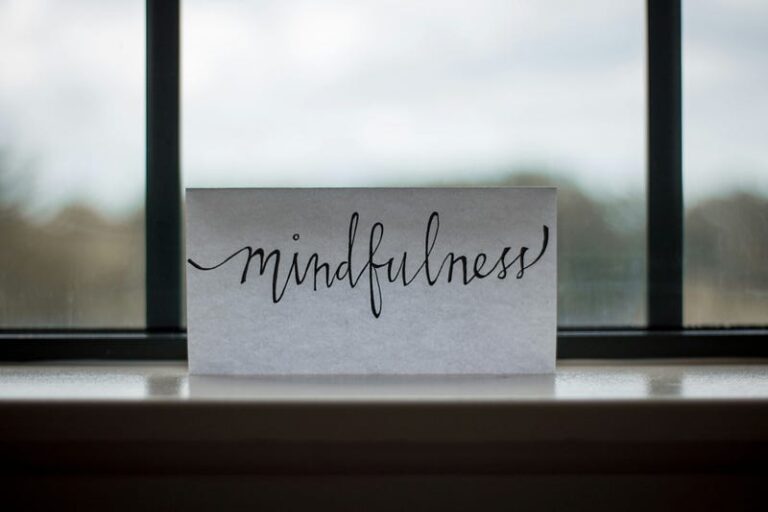The 80/20 Rule for Anxiety: Seneca’s Secret to Peace of Mind
“We suffer more often in imagination than in reality.”
— Seneca
A couple of years ago, I found myself completely overwhelmed. Between work stress, personal goals, and the constant pressure to be available and “on” for everyone, anxiety became a daily companion. My mind was always racing, playing out the worst-case scenarios of what could go wrong. I’d feel a tightness in my chest and a pit in my stomach even before the day began.
Then, during a late-night spiral of internet searches on how to calm my anxious mind, I stumbled across a quote from Seneca, the Stoic philosopher. It was short and simple, but it stopped me in my tracks:
“We suffer more often in imagination than in reality.”
That quote hit me hard. It felt like someone had just told me exactly why I was feeling so anxious all the time. And the more I thought about it, the more I realized it wasn’t just philosophy — it was a practical solution.
By applying this simple idea, along with the 80/20 rule (which i will definitely explain), I was able to reduce my anxiety by 80%.
Here’s how I did it — and how you can too.
The 80/20 Rule: What Is It?
The 80/20 rule, or the Pareto Principle, is a common concept in productivity and business.
It states that 80% of outcomes come from 20% of causes.
For example, in a business, 80% of profits might come from just 20% of customers.
But here’s the thing — it doesn’t only apply to businesses. The principle can be applied to nearly every aspect of life, including our mental and emotional states.
When I first encountered this concept, it made me think about my anxiety. Could it be that only a small portion of my thoughts were responsible for the majority of my stress? Was I letting a few imagined fears take up most of my mental energy? The more I thought about it, the clearer it became.
I was giving far too much power to a handful of worries, most of which weren’t even real.
The Power of Seneca’s Wisdom
Seneca’s quote — “We suffer more often in imagination than in reality” — felt like the missing puzzle piece to understanding my anxiety. It’s one thing to say, “Don’t worry about things you can’t control,” but it’s another to realize how much of our suffering comes from things that may never even happen.
The Stoics, like Seneca, taught that we should focus only on what we can control and not let ourselves be consumed by imagined fears.
His quote reminds us that most of the anxiety we experience is self-inflicted. We envision every possible negative outcome, even though the vast majority of them will never come to pass.
When I looked at my own anxiety, I realized how much of it was wrapped up in “what ifs” — what if I fail at work, what if I embarrass myself at that social event, what if things don’t go the way I planned so and so on.
The more I thought about these imagined scenarios, the worse I felt. Yet, in reality, most of these fears never materialized. I was suffering from my imagination, not from reality.
Understanding the Source of Anxiety
Here’s where the 80/20 rule really clicked for me: I realized that 80% of my anxiety was coming from just a small portion of my thoughts — my 20%.
Most of my stress and worry were tied to a few key triggers. For me, it was the fear of failure, the need to meet other people’s expectations, and overthinking the future. Those were the “20%” of thoughts that were causing most of my emotional suffering. And when I looked deeper, I saw that these triggers were largely based on imagined outcomes, not on anything that was actually happening in my life.
I remember a time when I was preparing for a big presentation at work. I couldn’t sleep the night before, imagining all the ways it could go wrong — tripping over my words, forgetting key points, or getting asked a question I couldn’t answer. In reality, the presentation went just fine. Sure, I stumbled over a word or two, but none of the catastrophic failures I had imagined came true.
The experience made me realize that so much of my suffering was unnecessary. I was living in my imagination, not in reality.
Applying the 80/20 Rule to Anxiety
So, how can you use this insight to reduce your own anxiety? is the real question.
It starts with identifying your “20%” — the small set of triggers or thoughts that cause the majority of your stress.
Take a moment to reflect on your day. What are the recurring worries that keep showing up? Is it fear of failure? Concern about what others think of you? Dread of future uncertainties?
Once you’ve identified your key anxiety triggers, it becomes easier to manage them.
This is where Seneca’s wisdom comes into play. Each time one of those anxious thoughts creeps in, ask yourself: “Am I suffering more in imagination than in reality?”
More often than not, the answer will be yes. By acknowledging that most of your fears are imagined, you strip them of their power.
For me, this meant catching myself in the act of worrying about the future and reminding myself that these scenarios hadn’t even happened yet — and probably wouldn’t.
The more I practiced this mental filtering, the less control my anxiety had over me.
Tools to Implement Seneca’s Advice
Here are a few practical steps you can take to apply Seneca’s wisdom and the 80/20 rule to your own life as I did them:
- Mindfulness and Reflection: Make time to pause during a day and check in with yourself. What thoughts are occupying your mind? Are they based on reality or imagination?
- Focus on What You Can Control: Seneca emphasized the importance of focusing only on what’s within your control. Identify the aspects of a situation you can actually influence, and let go of the rest.
- Challenge Your Imagination: When anxious thoughts arise, ask yourself: “Is this a real problem, or am I suffering in imagination?” This simple question can help you separate real concerns from imagined ones.
- Set Boundaries for Your Mental Energy: Limit the time and mental energy you spend on worrying. When you notice yourself getting caught up in anxiety, take a step back and refocus on what matters.
Finally
By combining Seneca’s timeless wisdom with the 80/20 rule, you can drastically reduce the anxiety that holds you back.
For me, the realization that I was suffering more in imagination than in reality was a turning point. Once I understood that most of my fears were self-created, I was able to let go of the majority of my anxiety.
Remember: you don’t need to eliminate anxiety entirely. But by focusing on the small 20% of triggers that cause 80% of your suffering — and realizing that most of them are imagined — you can find peace of mind.
So the next time you feel overwhelmed by worry, ask yourself: “Am I suffering more in imagination than in reality?” You might be surprised by how often the answer is yes.
Take a few minutes today to identify your 20% — those key triggers that fuel most of your anxiety — and begin using Seneca’s advice to lighten your mental load. You’ll be amazed at the clarity and calm you can achieve with just a small mental shift.







